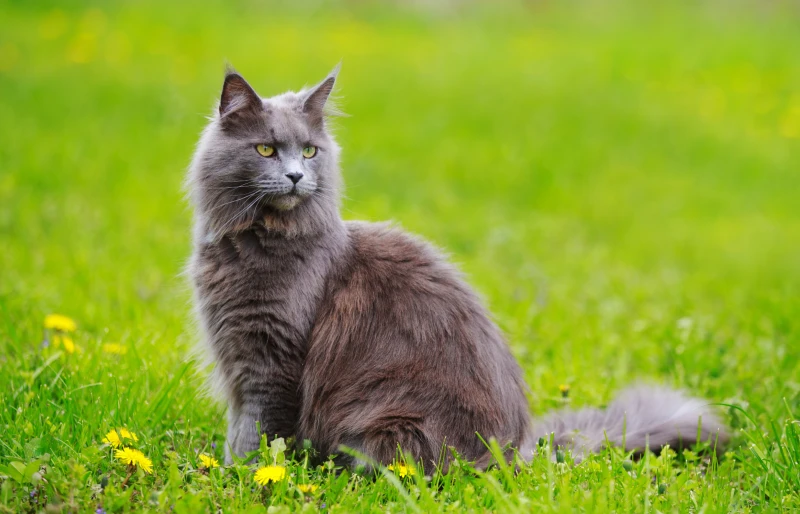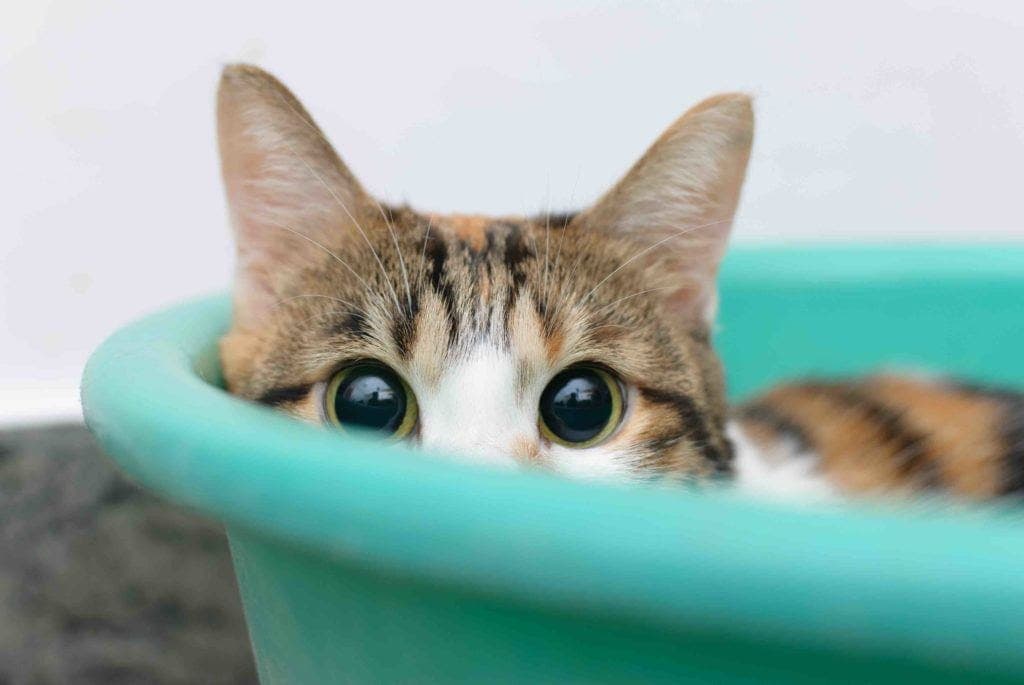Ocelot vs Savannah Cat: Similarities and Differences
Updated on
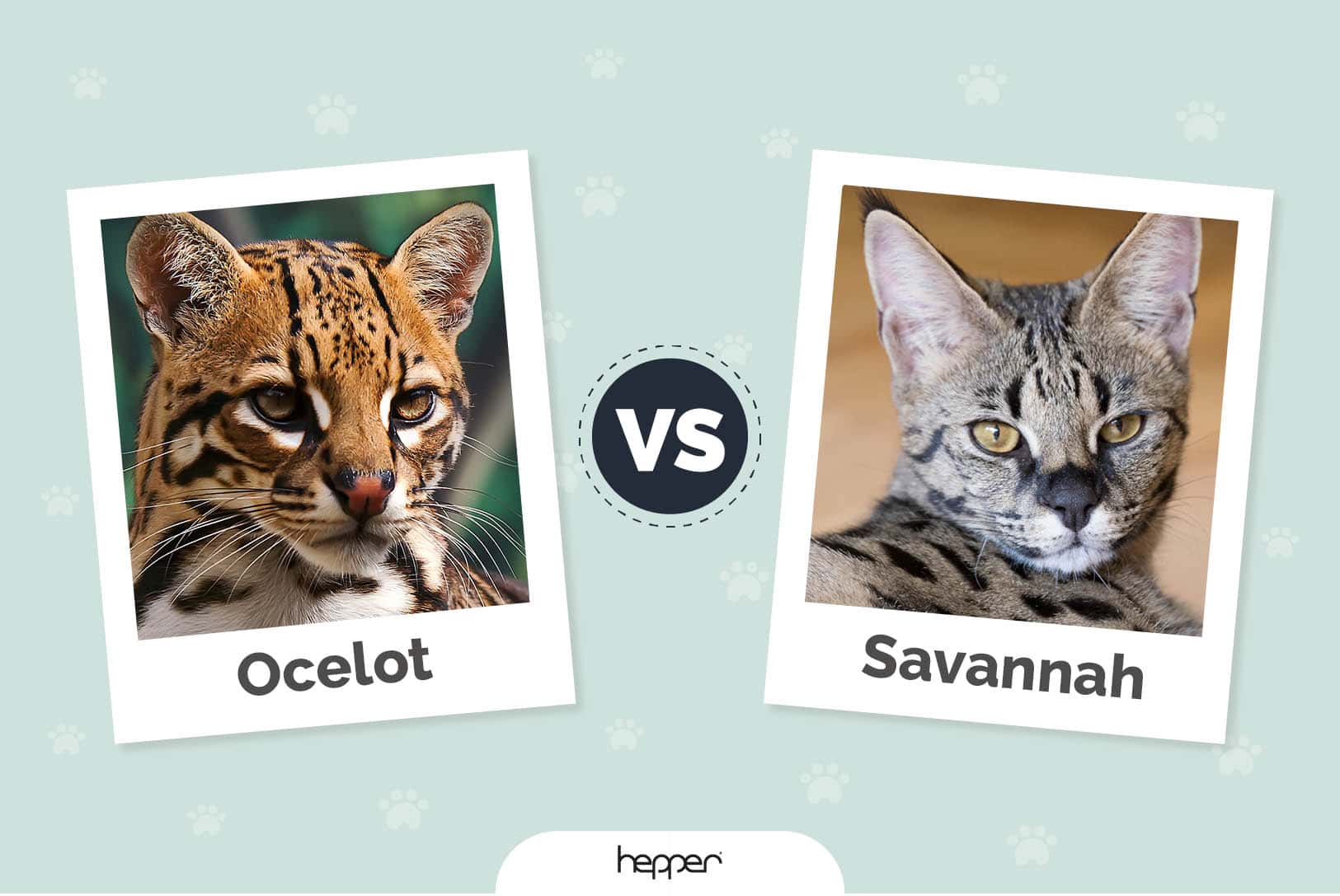
Have you always dreamed about owning a beautiful, spotted wild cat? If so, you might find yourself drawn to cat breeds with that trademark wild look. You’ve probably come across several breeds in your search for the perfect pet, but Ocelots and Savannah are likely at the top of your list.
Both animals have similar looks and some of the same personality traits. They have black spotted coats and tan coloration. They love water and need much attention to stay happy and healthy. Despite these similarities, Ocelots and Savannahs are two very different types of cats.
Ocelots are wild cats that live in central America and northern South America, while Savannahs are a domestic cat breed with wild cat genes. If you still have your heart set on adopting one of these beautiful cats, keep reading to learn more about them to see which is right for your lifestyle.
Visual Differences
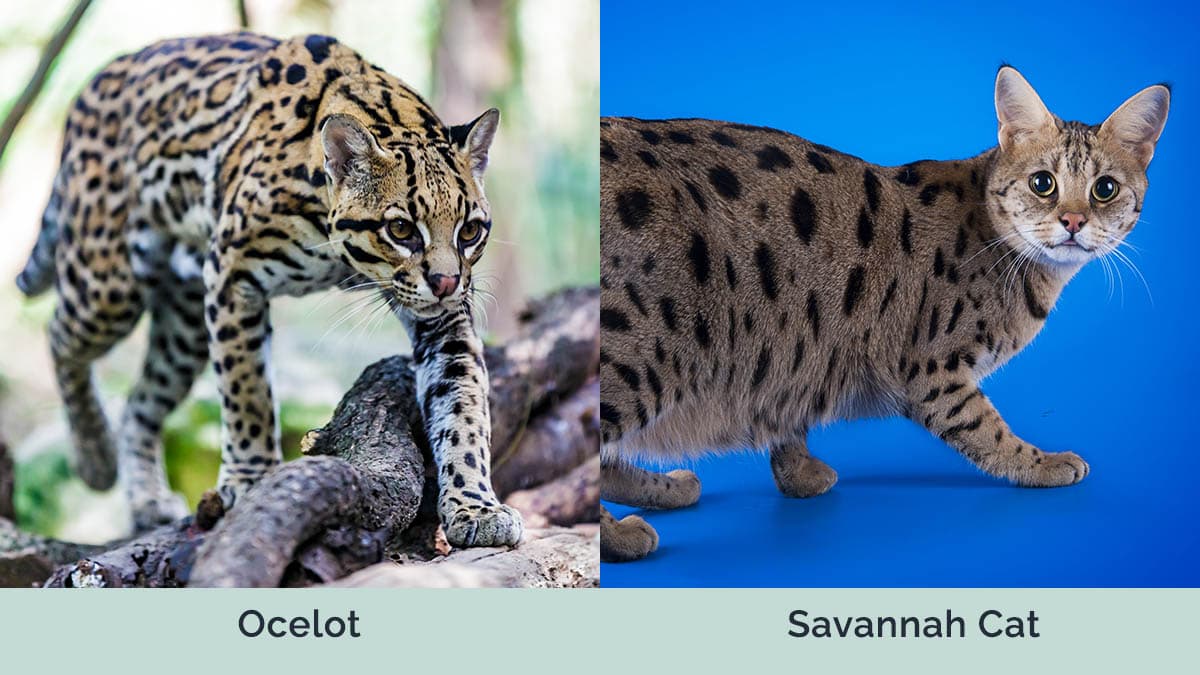
At a Glance
- Average height (adult): 29–39 inches
- Average weight (adult): 14–34 pounds
- Lifespan: Up to 20 years in captivity
- Exercise: High
- Grooming needs: Low
- Family-friendly: No
- Other pet-friendly: No
- Trainability: Low
- Average height (adult): 14–17 inches
- Average weight (adult): 12–25 pounds
- Lifespan: 12–20 years
- Exercise: Medium
- Grooming needs: Low
- Family-friendly: Yes
- Other pet-friendly: Often
- Trainability: High
 Ocelot Overview
Ocelot Overview
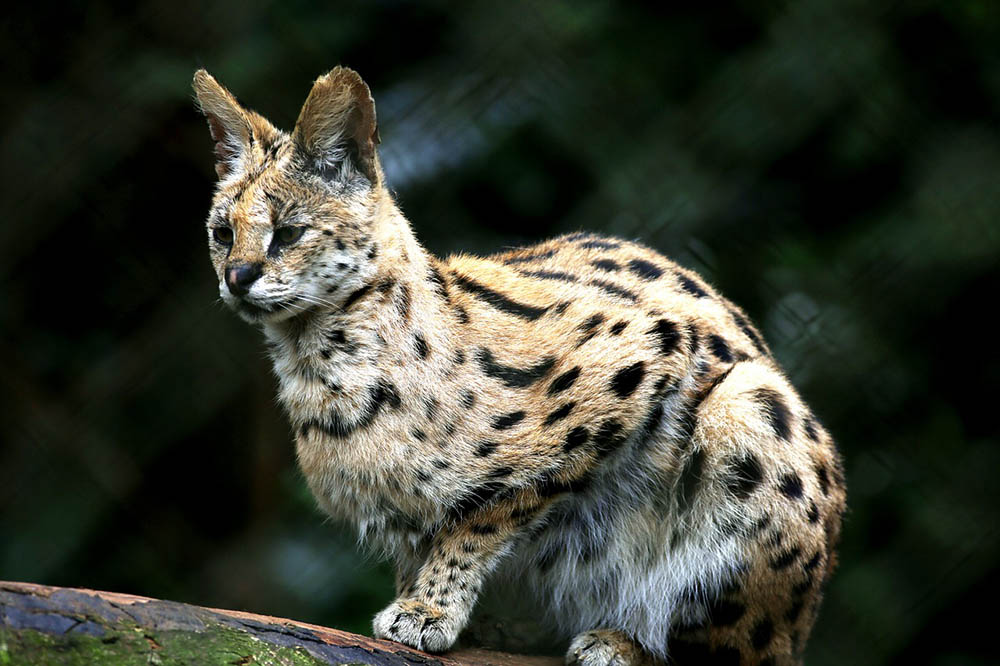
Ocelots are medium-sized spotted wildcats from the southwestern United States to northern Argentina. They are the largest member of the genus Leopardus. Ocelots live in tropical forests, mangrove swamps, and savannas, favoring places with dense forest cover.
Appearance
Ocelots are one of the most beautiful cats in the world. Sadly, they are often hunted for the fur trade because of their beautiful coats.
They have golden fur splashed with patterns all over their bodies with white or cream on the belly. Most Ocelots have dark brown or black spots in a donut shape with a lighter brown in the middle. Some spots may join together to form chains or stripes along the cat’s back or side. Ocelots have round ears with bright white spots. Their tails often are ringed with bands, and their cheeks are striped. No two Ocelots will have the same markings.
Ocelots are larger than domestic house cats but will only come up to a human’s knee. They are the second biggest spotted cat in South America after jaguars.
Personality
Ocelots are solitary animals mostly active during the twilight and night hours. During the day, they can be found resting in trees or hiding in dense foliage. Sometimes two Ocelots of the same sex will be found sharing a spot. They are typically very territorial cats, unafraid of fighting fiercely in territorial disputes. Ocelots mark their territory by spraying urine.
They demand much attention as pets and tend to experience life orally. They like to chew or suck on different textures and objects like blankets or fabrics. Some pet Ocelots are perfectly content sitting on their owner’s lap, suckling their fingers. They may get upset or aggressive if the finger is taken away, so it’s always important to redirect their attention to a toy or treat when removing your finger.
Ocelots are agile and playful, which can get them into all sorts of trouble when they’re playing in your home and not in the wild, where they have an entire forest to roam. Carefully raised Ocelots can be very affectionate, but they’re still not the easiest wild cat to maintain.
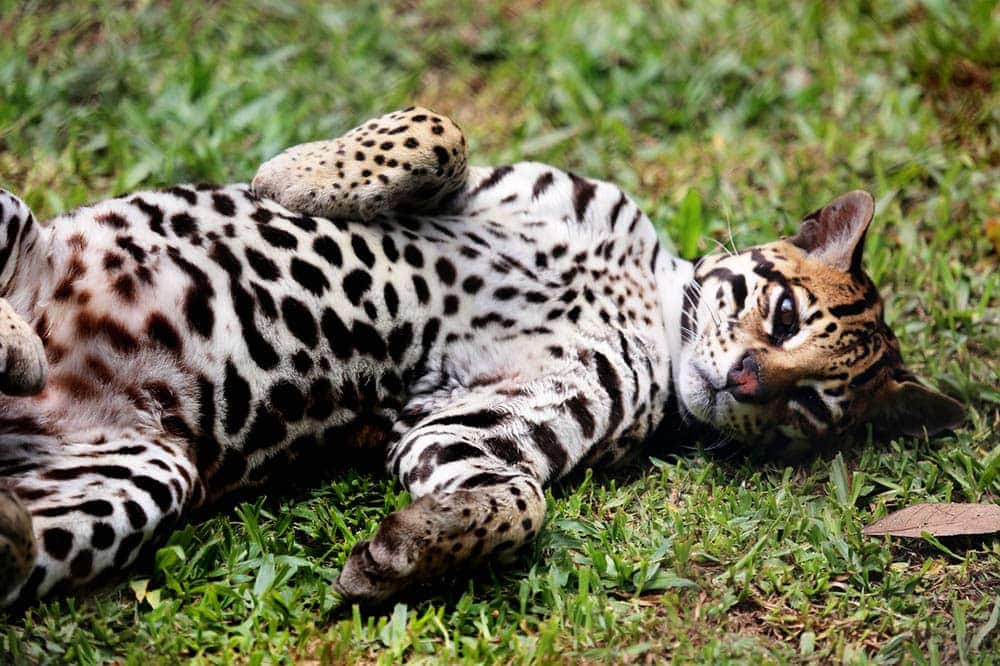
Care
Caring for Ocelots is a bit more involved than caring for domestic cats. They are climbers and diggers, so if you plan to let them in your backyard, you’ll need to ensure your fence is secured at the base and roofed. Their jaws are very strong, comparable to a Pitbull’s, so the fence should be made of durable materials to contain your cat.
Ocelots have very odorous feces and like to mark their territory by spraying urine. This can be a turnoff to owners who like to have their pets sleep in bed with them, as wild Ocelots are known to mark inside their dens, where they sleep. Some can be trained to use litter or newspaper for elimination, though younger kittens have been known to eat cat litter, which is bad for the digestive system. If you choose to newspaper-train them, remember your kitty won’t see the difference between the paper meant for elimination and other important papers like your tax return or pay cheque.
Since Ocelots are wild animals, finding appropriate veterinary care can be challenging. You can’t take them to any vet as many don’t know how to treat wild animals, and others will refuse as they are uncomfortable or afraid of treating these cats.
Exercise and Enrichment
Ocelots love platforms and poles they can climb. Unlike most domestic cats, they enjoy water to the point where they’ll happily dive below the surface to retrieve toys. Speaking of toys, the best options for an Ocelot are very well-constructed and durable ones that can withstand strong jaws and claws. You’ll need to supervise an Ocelot with new toys to ensure they won’t break and become a choking hazard for your pet.
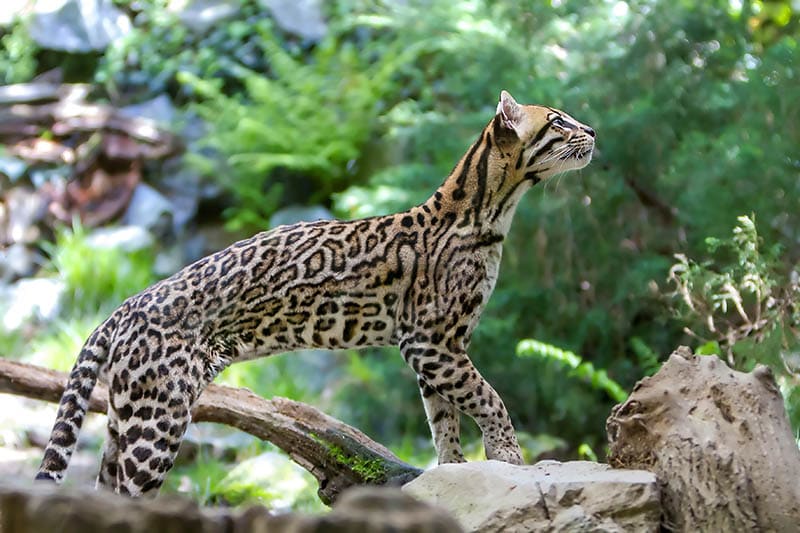
Suitable For:
Ocelots are wild animals and aren’t typically suitable as household pets. In fact, they are illegal to own in many U.S. states. Other states may not explicitly name an Ocelot as an illegal species, but your local government might have other rules regarding wild animals as pets.
That said, there are always people who fly under the radar and live happily and harmoniously with big cats in their home. However, if you have your heart set on an Ocelot, you must be willing to meet the excessive obligations required to keep one as a pet.
Savannah Cat Overview
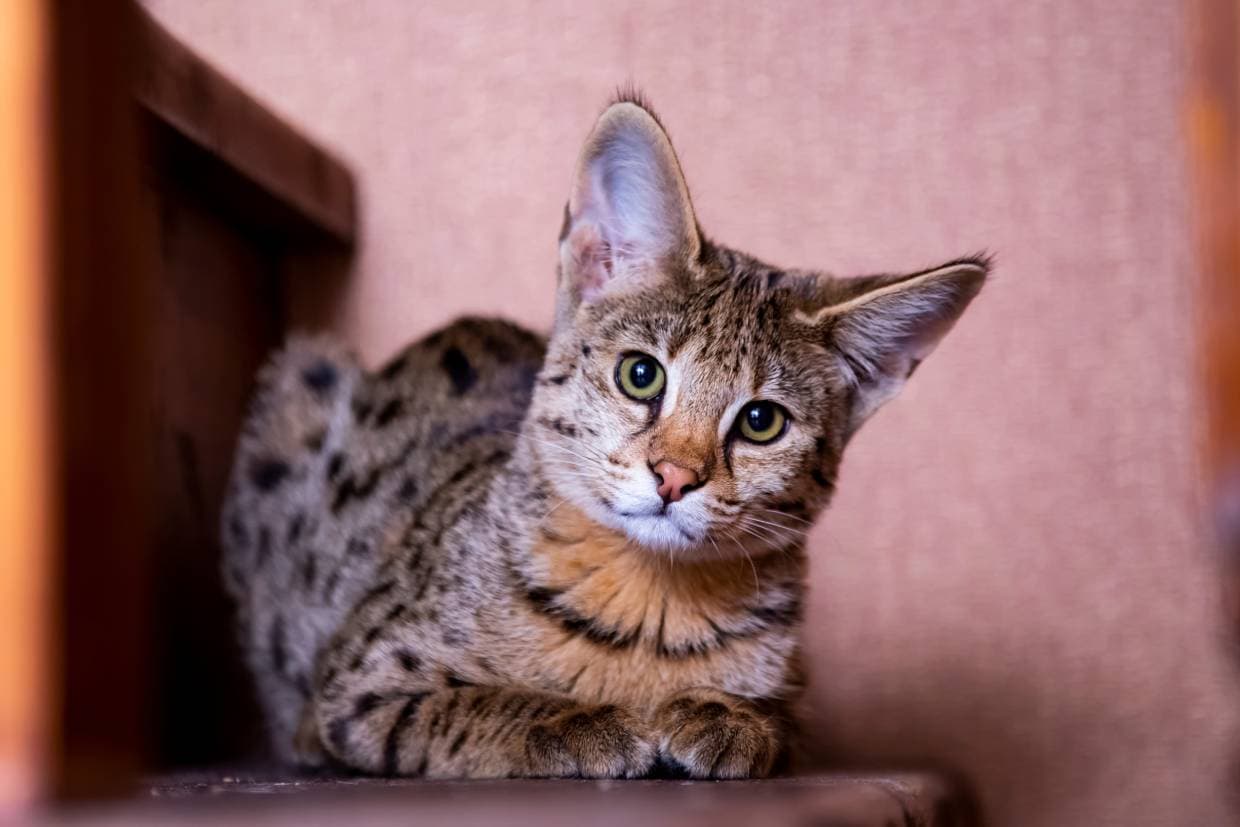
Savannah cats are a hybrid breed, resulting from a cross between a Serval and a domestic cat. They are the largest domestic cat breed, thanks to their Serval lineage. Savannahs became popular at the end of the 90s and were recognized as a registered breed by The International Cat Association (TICA) in 2001. TICA went on to accept Savannahs as a championship bred in 2012.
Appearance
Savannahs are tall and slim, giving them the appearance of a greater size than their weight suggests. The size will depend on the generation and gender, with F1 hybrid males being the largest. F1 and F2 generations have stronger genetic influences from the Serval side, and many first-generation Savannahs will maintain the Serval’s exotic traits.
The Savannah coat is usually spotted. Non-standard colors and patterns include snow, blue, cinnamon, lilac, and rosettes. It is short and dense in length and texture and is very easy to maintain with a quick weekly brushing.
Savannah’s eyes are slightly hooded and almond-shaped. They have a dark tear duct line that gives them a striking look and piercing gaze.
Personality
Savannahs are athletic and active cats, always getting themselves into some kind of trouble. They have fantastic jumping skills, which naturally complements their tendency to seek out high spots in your home. They can easily jump on top of doors or traverse the tops of your kitchen cabinets.
Savannahs are very intelligent and curious. They can learn to open doors and cupboards, so you may need to invest in childproof locks to keep your new kitty out of trouble.
Savannahs, like Ocelots, do not fear water and are happy to play and immerse themselves in it. So don’t be surprised if your Savannah jumps into your bathtub with you or expresses interest in joining you in the shower.
It is important to socialize Savannahs as they can become suspicious of strangers. However, they are very loyal to their humans and are often found following closely behind their favorite family members. Savannahs are sometimes also known as “Velcro kitties” because of their tendency to stick by their human family members.
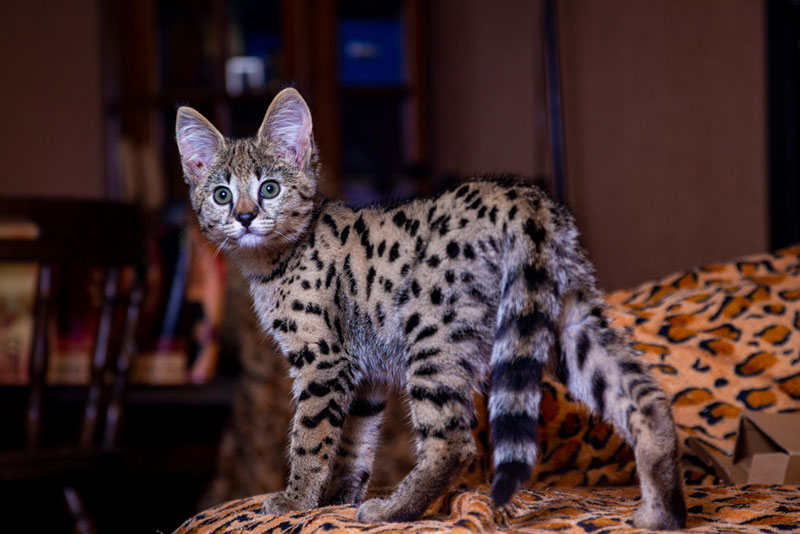
Care
Because Savannahs are great at jumping and opening doors and cabinets, you must ensure all breakables or dangerous goods are well out of reach. They can leap up to eight feet high, so almost nowhere in your home will be off-limits. Never leave them unattended if you let your Savannah outside in your yard to burn off steam. They can easily jump over your fence.
Savannahs can get bored easily, so adopting a feline or canine playmate may be worth considering. They don’t like being left to their own device for too long and would prefer having you home 24/7/365.
Exercise & Enrichment
Savannahs need many places to run, climb, and hide. You’ll need at least one cat tree, though your kitty would likely appreciate more. Challenging interactive toys are a must to keep your cat entertained and enriched.
You might consider buying or building a safe space outdoors like a catio. This will give your kitty fresh air and time outside while ensuring it stays safe.
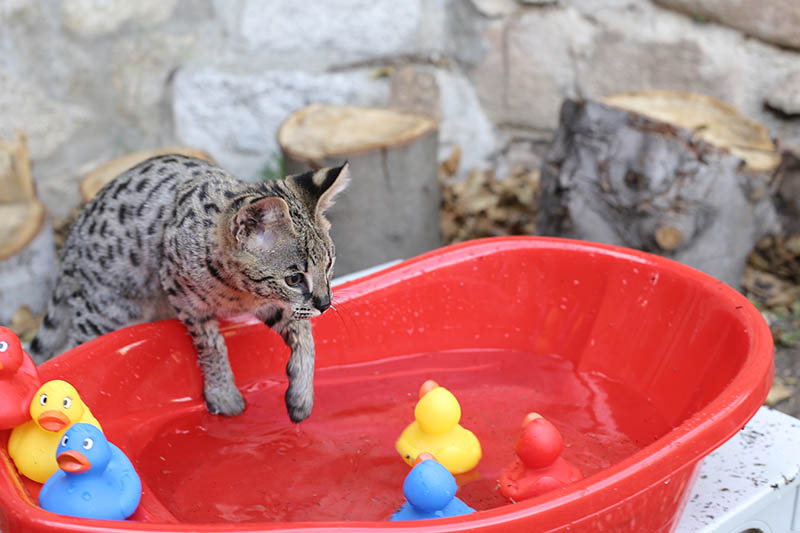
Suitable For:
Savannahs are a perfect breed for cat people who want a pet that pairs the appearance of a wild cat with a dog’s personality. They need homes with plenty of opportunities for enrichment and exercise. Savannahs are great family pets and do well in most homes with other pets.
Though Savannahs are domestic cats, there are laws in some places that govern the ownership of this breed. They are legal in many provinces and states, but it can depend on how wild the cat has in its blood. This is why it is important to know what generation the kitten you’re considering adopting is. For example, F4 and all later generations are legal in Alaska and New Hampshire. In New York state, F5 and all later generations are allowed, but all generations are illegal in New York City proper. Savannahs are legal throughout Canada, though some provinces restrict owning cats in F1 or F2 generations.
Which Breed Is Right for You?
Ocelots and Savannahs have a beautiful wild cat look, but Ocelots are actually wild cats. Depending on where you live, owning an Ocelot may be illegal. Since they’re wild cats, caring for them and getting them proper care from a veterinarian can be challenging. Adopting a wild animal is risky if you have small children or other animals in the home.
Savannahs are great for people that love the wild cat look but still want their pet to be a domestic cat. They can be a handful, but they’re loyal and intelligent, making them a great pick for most families. They are better than Ocelots for homes with children and other pets. While Savannahs are domestic cats, they still have wild cat blood in their genes. As such, you will need to check the laws in your city and state or province to ensure that owning one is legal.
If your heart is set on an Ocelot, you might consider the Ocicat instead. Ocicats are an all-domestic breed that closely resembles the Ocelot but without recent wild cat DNA in its gene pool.
Featured Image Credit: (L) Leonardo Mercon, Shutterstock | (R) Katerina Mirus, Shutterstock

 Ocelot Overview
Ocelot Overview
